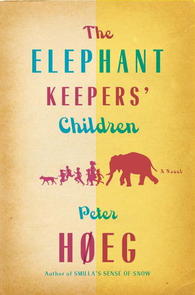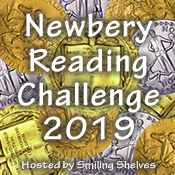
The novel begins with Peter’s parents disappearing. He and his older sister, Tilte, immediately realize they must find them – in essence, go to their rescue. Peter and Tilte have a strong connection. Both have had their hearts broken by the love of their life (although you may think 14 and 16 years old respectively a bit young for such heartbreaks). Both feel more inclined to take care of their parents, rather than vice versa. The pastor and his wife are enthusiasts. Since she is extremely talented mechanically, they have often used that to their advantage in creating “miracles” to draw people to church. While this breaks no laws, Peter and Tilte find their parents to be treading slippery ground. They are afraid to see where this path will lead them. As they begin to uncover clues in the parents’ disappearance, their fears seem to be realized.
The elephants mentioned in the title are not real elephants at all. They are obsessions, enthusiasms, major concerns….honestly, they are rather hard to describe, so I’ll just let Peter do it for you: “Mother and Father have something inside them that is much bigger than themselves and over which they have no control…This is what they live for above all else, and it is this yearning that has given them that sorrowful look around the eyes, and it is a yearning as big as an elephant, and we can see that it will never properly be fulfilled.” (p. 148-149) Surely, to some extent, we all have an elephant in our lives, whatever it may be.
Peter and Tilte’s adventures border on the ludicrous, but that’s really simply the style of the book. It’s not meant to be realistic; it’s meant to be absurd. Some of the characters’ names alone show this (honestly, one of my favorite parts): there’s Anaflabia Borderrud, Professor Thorkild Thorlacius-Claptrap, Leonora Ticklepalate, and Sinbad Al-Blablab, to name just a few. In a way, this book tackles religious fervor. There is a Grand Synod of all religions in Copenhagen, which, as you can imagine, becomes rather essential to the plot. The author, Peter Hoeg, makes up a few religions to lay alongside the traditional ones. And while he doesn’t treat any religion precisely respectfully, he doesn’t exactly treat them disrespectfully either. It’s part of the ridiculous profundity of this book. He can describe a basic human truth couched in an impossibly silly situation, and you can learn something from it all.
The Elephant Keepers’ Children is really an enjoyable book. It’s unusual, certainly, but that is part of its draw. Read it to discover what love is, of what nature your elephant is, or simply to get lost in a good story. There’s something for everyone here.






 RSS Feed
RSS Feed







